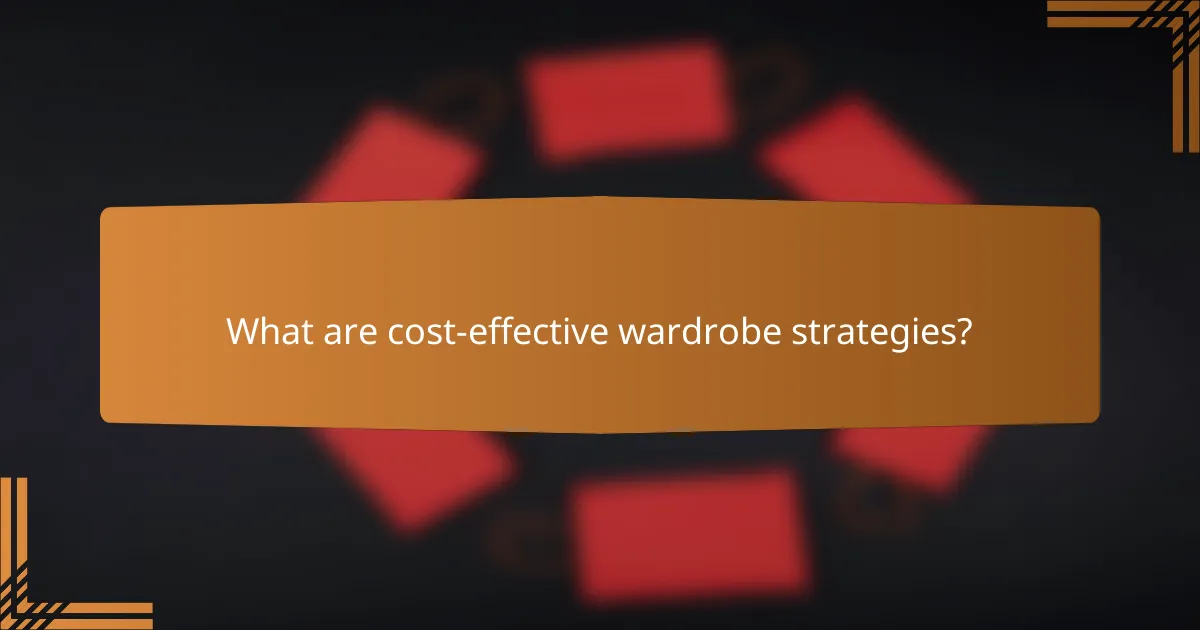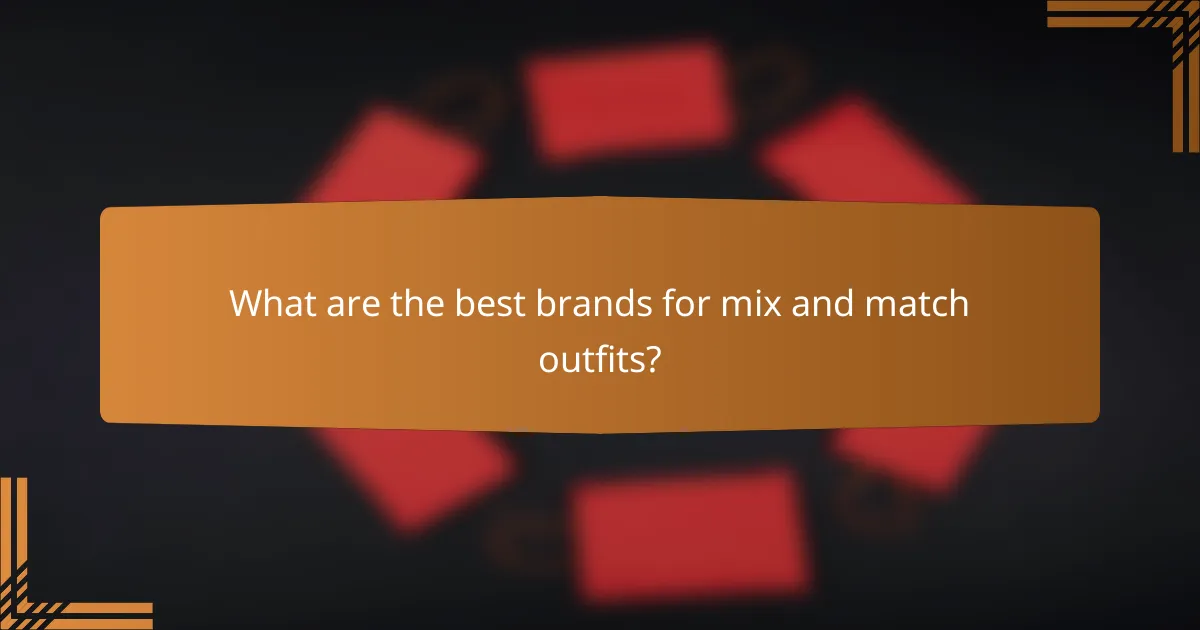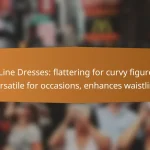Mixing and matching outfits allows you to create versatile styles that adapt to different occasions while making the most of your wardrobe. By focusing on layering, textures, and a cohesive color palette, you can develop creative combinations that maximize your clothing’s potential. This approach not only enhances your personal style but also offers a cost-effective way to refresh your look without the need for constant shopping.

How to create versatile outfits in London?
Creating versatile outfits in London involves selecting pieces that can be easily mixed and matched to suit various occasions and weather conditions. Focus on layering, incorporating different textures, and choosing a neutral color palette to maximize your wardrobe’s potential.
Layering techniques for different seasons
Layering is essential in London due to its unpredictable weather. In the colder months, start with a base layer like a fitted turtleneck, add a mid-layer such as a lightweight sweater, and finish with a stylish coat. For warmer seasons, opt for breathable fabrics and lighter layers, like a tank top under a loose shirt.
Consider using accessories like scarves or cardigans to add warmth without bulk. This approach allows for easy adjustments throughout the day as temperatures fluctuate, ensuring comfort and style.
Mixing patterns and textures
Mixing patterns and textures can elevate your outfits while keeping them fresh. Start by pairing a patterned top with solid bottoms to maintain balance. For instance, a floral blouse can look great with classic denim or tailored trousers.
When combining textures, consider pairing a chunky knit sweater with sleek leather pants. This contrast adds depth to your look. Remember to keep the color scheme cohesive to avoid clashing, and don’t hesitate to experiment with different combinations.
Choosing a neutral color palette
A neutral color palette is key for versatile styling, as it allows for easy mixing and matching. Shades like black, white, beige, and grey can serve as a foundation for your wardrobe. These colors are timeless and can be dressed up or down depending on the occasion.
To add interest, incorporate a few accent colors through accessories or statement pieces. This strategy keeps your outfits dynamic while ensuring that the core pieces remain versatile and easy to coordinate across different looks.

What are cost-effective wardrobe strategies?
Cost-effective wardrobe strategies focus on maximizing outfit versatility while minimizing expenses. By selecting key pieces and utilizing creative combinations, you can create numerous looks without constantly buying new clothes.
Capsule wardrobe essentials
A capsule wardrobe consists of a limited selection of versatile clothing items that can be mixed and matched to create various outfits. Key essentials typically include a few well-fitting tops, bottoms, a versatile dress, outerwear, and a pair of shoes that can transition between casual and formal settings.
To build a capsule wardrobe, choose neutral colors and classic styles that won’t go out of fashion. Aim for around 20-30 pieces that work well together, allowing for easy coordination and creativity in styling.
Thrift shopping tips in the UK
Thrift shopping in the UK can be a treasure hunt for unique and affordable clothing. Look for charity shops, vintage boutiques, and online platforms like Depop or eBay to find second-hand items at a fraction of the retail price.
When thrifting, check for quality by inspecting seams, zippers, and fabric condition. Set a budget to avoid overspending and focus on pieces that can easily integrate into your existing wardrobe.
Renting designer pieces
Renting designer clothing is an excellent way to enjoy high-end fashion without the hefty price tag. Services like HURR Collective or MyWardrobeHQ allow you to borrow items for special occasions or to refresh your wardrobe temporarily.
Consider renting for events where you want to make a statement. This approach not only saves money but also promotes sustainable fashion by reducing waste. Always read the rental terms regarding wear and care to avoid extra fees.

How to combine outfits creatively?
Combining outfits creatively involves mixing and matching various clothing pieces to create unique looks while maximizing your wardrobe’s potential. By experimenting with different styles, colors, and accessories, you can develop versatile outfits that suit various occasions without needing to purchase new items.
Using accessories to transform looks
Accessories can dramatically change the appearance of an outfit, making them a powerful tool for creative styling. A simple dress can be transformed with the addition of a statement necklace, a belt, or a pair of bold shoes. Consider using scarves, hats, and bags to add layers and interest to your ensemble.
When selecting accessories, aim for a balance between bold and subtle pieces. For example, if your outfit is already vibrant, opt for understated accessories to avoid overwhelming the look. Conversely, a neutral outfit can benefit from eye-catching accessories to add personality.
Seasonal outfit challenges
Seasonal outfit challenges encourage you to create looks based on the current weather and trends, promoting creativity within your wardrobe. For instance, in winter, layering is key; you can mix long-sleeve tops with cardigans and stylish coats. In summer, focus on lightweight fabrics and bright colors to keep cool while looking fashionable.
To make the most of seasonal challenges, consider setting a goal to wear a specific item multiple ways throughout the season. This not only enhances your creativity but also helps you discover new combinations you might not have considered before.
Inspiration from fashion influencers
Fashion influencers can provide fresh ideas for combining outfits creatively. Following a few key influencers on social media platforms can expose you to diverse styles and innovative ways to mix and match your clothing. Look for influencers who align with your personal style and budget to ensure their suggestions resonate with you.
Engage with their content by taking notes on outfit combinations that catch your eye. You can also recreate their looks using similar pieces from your wardrobe, adapting them to fit your unique taste. This approach not only inspires creativity but also helps you develop your fashion sense over time.

What are the best brands for mix and match outfits?
The best brands for mix and match outfits offer versatile pieces that can be easily combined to create various looks. Look for retailers that prioritize quality, affordability, and a wide selection of styles to maximize your wardrobe’s potential.
Top affordable UK fashion retailers
In the UK, several affordable fashion retailers excel in providing mix and match options. Brands like Primark, H&M, and ASOS offer trendy pieces at budget-friendly prices, making it easy to build a versatile wardrobe without overspending.
Additionally, retailers such as Zara and Mango provide stylish options that can be paired together for a chic look. Shopping during sales or utilizing discount codes can further enhance your savings while expanding your outfit possibilities.
High-street vs. designer options
High-street brands typically offer more accessible prices and a wider variety of styles, making them ideal for mix and match outfits. They allow for frequent updates to your wardrobe without significant financial commitment.
On the other hand, designer options can provide unique, high-quality pieces that elevate your outfits. Investing in a few key designer items can enhance your overall style, but it’s essential to balance these with more affordable pieces to maintain versatility.

What criteria should you consider when styling outfits?
When styling outfits, consider body shape, fit, and the appropriateness for the occasion. These criteria help ensure that your clothing not only looks good but also feels comfortable and suits the context in which you wear it.
Body shape and fit
Understanding your body shape is crucial for selecting outfits that enhance your best features. Common body shapes include hourglass, pear, apple, and rectangle, each benefiting from different styles. For example, hourglass figures often look great in fitted dresses that accentuate the waist, while pear shapes may prefer A-line skirts that balance proportions.
Fit is equally important; clothing should neither be too tight nor too loose. Aim for a comfortable fit that allows for movement without compromising style. Always try on different sizes and styles to find what works best for your unique shape.
Occasion appropriateness
Choosing outfits that match the occasion is essential for making a good impression. Casual settings may call for relaxed clothing like jeans and t-shirts, while formal events typically require tailored suits or elegant dresses. Consider the venue and the expected dress code when selecting your attire.
Additionally, think about the time of day and season. Lighter fabrics and brighter colors are often suitable for daytime events, while darker tones and heavier materials work well for evening occasions. Always err on the side of being slightly overdressed rather than underdressed to ensure you feel confident and comfortable.

How to maintain a versatile wardrobe?
Maintaining a versatile wardrobe involves selecting key pieces that can be mixed and matched for various occasions. Focus on quality over quantity, ensuring that each item complements others to maximize outfit combinations.
Regular decluttering practices
Regular decluttering helps keep your wardrobe versatile by removing items that no longer fit or suit your style. Aim to assess your clothing every few months, setting aside pieces that you haven’t worn in the past year.
Consider creating a checklist for decluttering: ask yourself if the item fits well, if it matches your current style, and if you have worn it recently. If the answer is no, it may be time to let it go.
Seasonal storage solutions
Seasonal storage is essential for maintaining a versatile wardrobe, as it allows you to keep only relevant items accessible. Store off-season clothing in bins or vacuum-sealed bags to save space and keep your wardrobe organized.
Label storage containers clearly and consider using a rotation system. For example, when summer ends, pack away summer clothes and bring out fall pieces. This practice not only declutters but also refreshes your wardrobe regularly.

What are emerging trends in outfit styling?
Emerging trends in outfit styling focus on versatility, sustainability, and creativity. These trends encourage individuals to mix and match their wardrobe pieces to create unique looks while being mindful of environmental impact and cost-effectiveness.
Eco-friendly fashion choices
Eco-friendly fashion choices emphasize sustainable materials and ethical production practices. This trend encourages consumers to select clothing made from organic cotton, recycled fabrics, or other environmentally friendly materials, reducing their carbon footprint.
When building a versatile wardrobe, consider investing in high-quality, timeless pieces that can be easily mixed and matched. Brands that prioritize sustainability often provide transparency about their sourcing and manufacturing processes, helping you make informed choices.
To incorporate eco-friendly options into your outfits, look for second-hand clothing, participate in clothing swaps, or support local artisans. This not only promotes sustainability but also adds unique flair to your style while being budget-friendly.


